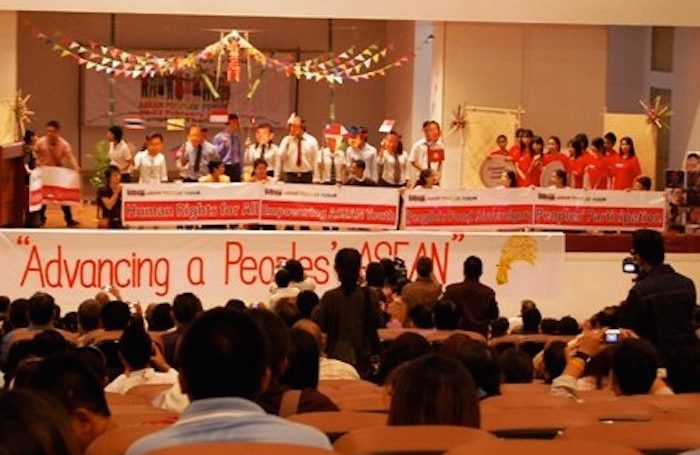
Student mobility has been growing steadily in the past few decades. Such progression has proven invaluable for some countries which managed to properly attract and welcome international students. Yet, this is just the beginning, and ASEAN may be already lagging behind.
Project Atlas data from 2017 reveals that the number of international students was 4.6 million globally. This is projected to double before 2025. The major inward and outward student fluxes are seen, respectively, within the North American continent and Europe, and the Asia-Pacific. The former two regions host the majority of the international students. Conversely, the Asia-Pacific region is where most local students decide to go abroad. This may bring wealth and knowledge elsewhere. When such skilled and highly educated individuals decide to settle abroad instead of devoting their acquired expertise to their home countries, it may result in ‘brain drain’.
There are several exchange programs with varied impact around the world. Some of them are bilateral but limited to a few partner universities, some other institutions formed consortiums across several countries and continents. The US offers numerous opportunities and scholarships through their Fullbright Program. This initiative has been providing grants and supporting student exchange for nearly seven decades. The EU commenced the Erasmus exchange program in 1987 and, today, it is probably known as the greatest example of student mobility worldwide. Yet, its creation has not been a smooth and easy process as it was affected by several postponements. In 2015, the European Commission released some statistics highlight the arguably remarkable achievements. The provision for the following Erasmus+ timeframe aims to grant financial assistance to more than 4 million people.
The Association of Southeast Asian Nations (ASEAN) was founded in 1967, but it developed at a slow pace. Yet, by the end of 2015, the community took an important additional step when establishing a renewed ASEAN Economic Community. The community’s initial goals were mostly economic and aimed at preserving stability and peace across the area. Education has lately assumed a more prominent role, but the regional mobility prospective may be far from fulfilling the potential that such community could aspire to reach, especially if the flux of students is outward.
A quick overview shows that neighboring countries may facilitate mobility fluxes. However, whenever given the opportunity through scholarships or family support, Southeast Asian students are more likely to study overseas. English speaking countries are prominently occupying the top positions of choice. This is not to say that efforts have not been made, at least on paper. Several minor initiatives exist across the region, such as the ASEAN International Mobility for Students (AIMS). Currently, the main promoter of exchange programs is the Southeast Asian Ministers of Education Organization (SEAMEO). Yet the number of students involved in these actions is limited, especially when compared with other countries of the Asia-Pacific region. A parallel organization is the ASEAN University Network (AUN), established in 1995, with the ambition to create and support interdisciplinary degrees across the region.
However, despite the apparently ambitious and diversified initiatives, the actual focus on student exchange advancement may be obstructed and slowed down. A primary cause is the dilution and allocation of limited resources needed to operate so many bilateral collaborations, with an often limited and unclear scope. Another central issue is the lack of effective coordination between the involved parties, which may lead to additional delays. A clear division of tasks and potential restructuration of the whole network may be necessary to guarantee efficiency and motivation towards specific goals. The organization gathers a remarkable amount of collaborations but, ultimately, the efforts seem more aimed at self-promotion than the desire to actually deliver results.
Since this article considers the EU’s Erasmus Programme as the primary example, it is worthwhile to mention the SHARE initiative. This is an EU Grant funded project with an overarching objective to strengthen regional cooperation, enhance the quality, competitiveness and internationalization of ASEAN higher education institutions and students, contributing to an ASEAN Community beyond 2015.’ The final goal is to develop and intensify collaboration between the EU and the ASEAN Economic Community (AEC).
Surely, ASEAN is not the EU, but bright students willing to develop intercultural skills are likely to be equally present in both macro-regions. Several integration issues, as much as social ones, may benefit from a comprehensive Erasmus-like project. If well executed, the promotion of intra-regional exchange could result in gradual socio-economic and educational improvements at every level. ASEAN may not be ready for such initiative since several issues of various nature are yet to be solved. Nonetheless, there are a few positive aspects which appear to be encouraging. The central one is the overall economic growth, led by the local middle class, combined with slow but steady developments in infrastructure and standardization of the education system. This could ultimately result in local students’ rising interest to pursue their degrees within ASEAN’s borders. A clear plan ought to be considered sooner than later. Regional leaders should avoid missing one more opportunity to show that the member states are, truly, stronger together.
To conclude, I would like to refer to Rahul Choudaha who envisaged the arrival of ‘glocal’ students for the ASEAN region, intended as ‘people who have global aspirations, but need to stay local.’ The author claims that being prepared to welcome this ‘new breed’ of students at every step of their formation will bring along considerable advantages. These are the young minds that will prove to be invaluable for local communities in the upcoming years.
Be ready, the ‘glocal’ students are coming. Hopefully.
Further Reading on E-International Relations
- ASEAN Centrality and Its Narratives in an Evolving Regional Order
- ASEAN’s Sempiternal Challenge: Maintaining Centrality in the Indo-Pacific
- Looking Back on ASEAN and Sino-US Rivalry in the Cold War
- Integration of the Central Asian Republics: the ASEAN example
- ASEAN ‘Cohesiveness and Responsiveness’ and Peace and Stability in Southeast Asia
- The ASEAN Way Out? Toward Cooperative Environmental Governance in Southeast Asia